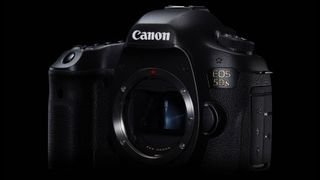Why you can trust TechRadar
With 50.6 million effective pixels on its full-frame sensor, the Canon 5DS has the highest pixel count of any small format SLR and it matches that of several medium format models. We often remind people that there's much more to a camera than pixel count, but a highly populated sensor is enticing because, provided that noise is handled sensitively, it enables images to be viewed or printed much larger or heavy crops to be made. The 5DS produces images that measure 73.56 x 49.04cm or 28.96 x 19.31inches when they are sized to 300ppi. In comparison the 22.3-million-effective-pixel Canon 5D Mark III produces images that measure 48.77 x 32.51cm or 19.2 x 12.8inches at 300ppi. This could be a significant advantage to professional photographers and anyone wanting to produce large, high quality prints for exhibition.
Having a full-frame sensor also enables much greater control over depth of field than is possible with APS-C or Four Thirds format sensors.
Apart from the large file size, one often overlooked issue with using a high pixel count camera is that you need to take more care over how images are captured. It's important to focus carefully, and follow the guidelines about avoiding camera shake, either using high shutter speeds or ensuring that the camera is securely mounted on a decent tripod and mirror lock-up is employed. The 5DS makes it much easier than most other cameras to use mirror lock-up because the exposure can be set to take place automatically after a short delay following the shutter release being pressed and the mirror lifting. This does away with need for tedious double-pressing, using the self-timer or even using a remote release.
Having a high pixel count means that the photoreceptors must be very small and this is a challenge for image quality. However, Canon's engineers have met the challenge head-on because the 5DS and 5DS R produce superb quality images that have fantastic amounts of detail, even beating that of 50Mp medium format cameras like the Pentax 645Z. Noise is controlled very well and dynamic range is good, at least at the lower sensitivity settings.

We like
Anyone who has used a Canon 5D Mark III will find switching to use the 5DS very easy because it has exactly the same sensible control layout. This is good news for those photographers who wish to swap between the two cameras, using the 5D Mark III for action and low light and the 5DS or 5DS R when maximum detail is required.
Canon has clearly put a lot of thought into how photographers like to use their camera, enabling quick access to key features. There are also niceties like a Rating button and an HDR mode that records raw and JPEG images.
While the 5DS has a lot in common with the 5D Mark III, the metering system has been improved and it's a little more reliable in high contrast conditions or when the subject is very dark or bright.
We dislike
While I am perfectly comfortable using Canon's control system, I am drawn towards traditional controls offered by the likes of Fuji and Sony. An aperture ring is a quick and easy way of setting aperture and an exposure compensation dial gives a fast and direct way of adjusting exposure. But it would be impossible to have these controls and be able to switch smoothly between the 5DS and the 5D Mark III.
Although Wi-Fi connectivity is available in cameras lower down Canon's DSLR line-up, and the 750D and 760D even have NFC (Near Field Communication) technology, Canon has been stubborn about putting it in its advanced models. This is a shame, because although images would need significant resizing for transferring to a smartphone, Wi-Fi connectivity also provides a great way of controlling a camera without touching it and thus avoiding introducing vibration. It also adds a convenient means of geotagging images, which some photographers might find useful as there no GPS system in the camera.
While the 5DS is best suited to shooting large still images, there are some who will be sorry that it lacks a headphone port for monitoring sound while recording video, and some will wonder why it's not possible to record 4K video.
Verdict
While it has an autofocus system that can keep up with fast moving subjects even in low light and can record high quality video, the 5DS/5DS R isn't designed to be either a video or sports camera. It's designed to take high quality still images. It does this brilliantly. The images from the 5DS have an incredible amount of detail and look superb, but if you have to have the absolute maximum level of detail go for the 5DS R, but there are few instances where you will be able discern a difference so I would opt for the 5DS and save a bit of cash. Whichever model you opt for, you may need to upgrade your lenses to get the benefit of the cameras' resolving power.

